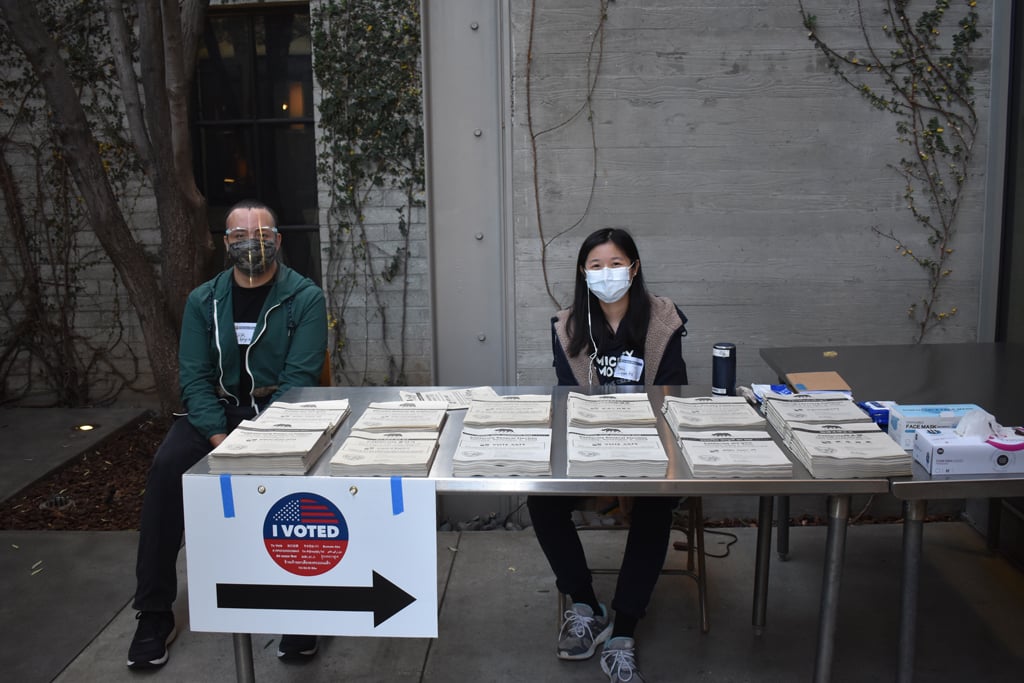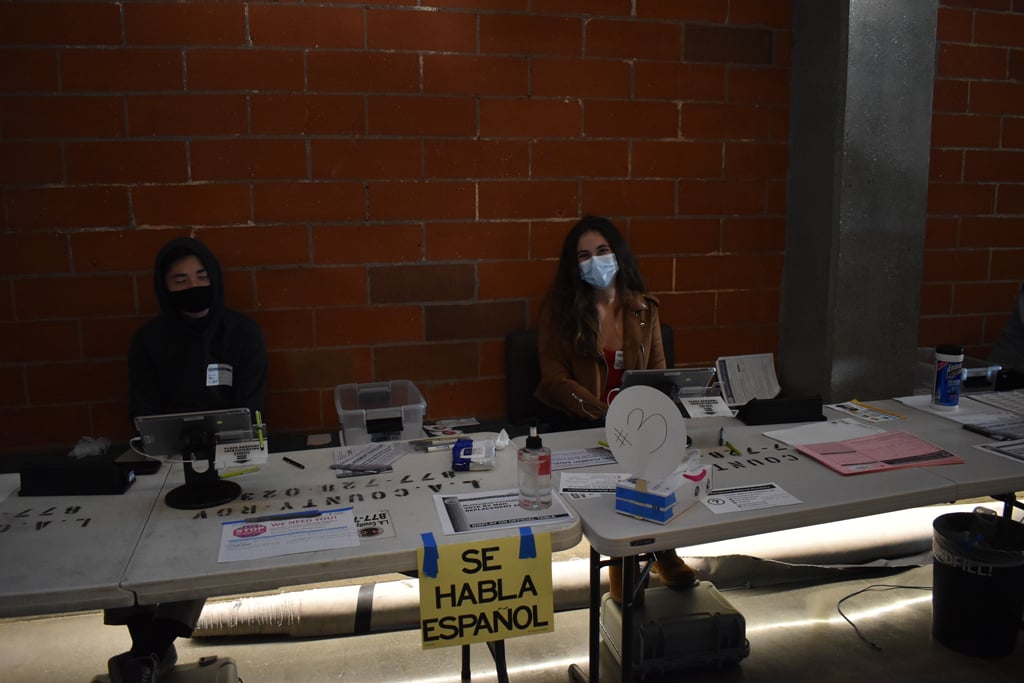Santa Monica’s students may be too young to vote, but that isn’t stopping them from getting political. This week students were out working at local polling centers and have participated in a district wide mock election.
“It’s been pretty inspiring to see everybody of all ages come in to vote and it makes me even more happy to be a part of the democratic process,” said Violet Street Scott, a senior at Samohi who is volunteering at the Santa Monica College vote center.
The Santa Monica-Malibu Unified School District has a robust civic education program that teaches students about social justice and the electoral process. Many students are youth activist leaders and engage in politics far beyond the classroom.
“I went to my protest when I was 13, my mom went to her first protest when she was 47. It’s very much a generational change where we are a lot more politically involved,” said Street Scott. Now at the age of 17, Street Scott has worked the polls in two elections, planned several strikes, led a voter registration drive, and participated in the women’s march, climate march, and BLM protests.
Street Scott is one of several local students who have stepped up to promote voting at the polls. In the 2018 election, 58 percent of poll workers were ages 61 and over, according to Pew Research Center. Many of these older workers are not able to assist in this election due to their vulnerability to COVID-19, so local students are providing an essential service.
“I’ve been working at the poll center located at the Will Rogers Elementary School cafeteria,” said Samohi student Jared Arita. “I thought why not, I’m not doing anything special in these circumstances. I should get out there and help any way I can since I’m not old enough to vote yet.”
Santinder Hawkins, coordinator of American cultures & ethnic studies at SMMUSD, gave Zoom presentations in several classes encouraging high school students to work at polls. Hawkins also led a district wide mock election for students K-12 to participate in.
“Teaching students about the history and process of voting ensures that they are more likely to be active participants in democracy when they become adults,” said Hawkins. “I believe it also provides young people with a sense of efficacy and optimism, the idea that they can be part of the work of making the world a better place.”
More than 2000 students participated in the mock election where they learned about the electoral process and propositions on the California ballot. Unsurprisingly, 84 percent of students voted for Biden, while 8 percent voted for Trump, and 8 percent voted for an alternative candidate.
“What I think is more important than who the students voted for, was that they were given the opportunity to practice becoming voters themselves,” said Hawkins. “In the many mock elections that I’ve organized, what never seems to change is the interest, enthusiasm, and joy children and adolescents take in learning about the political issues of their day.”


Photos by Clara Harter









